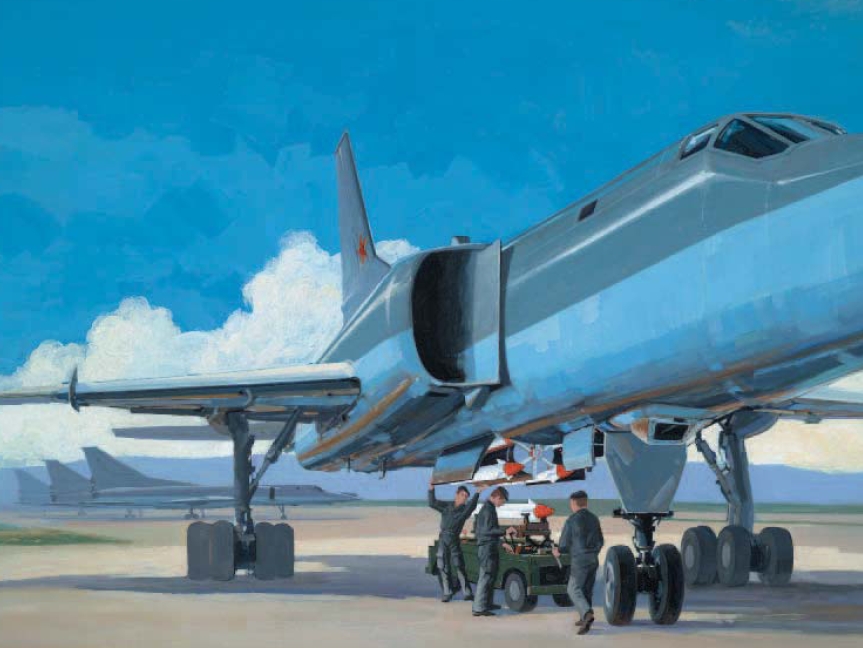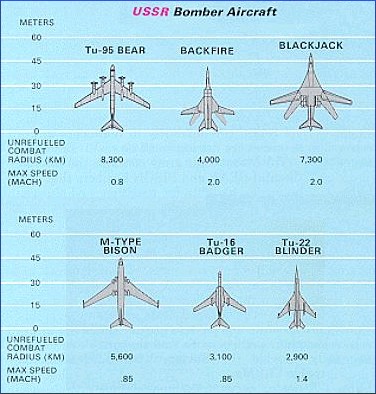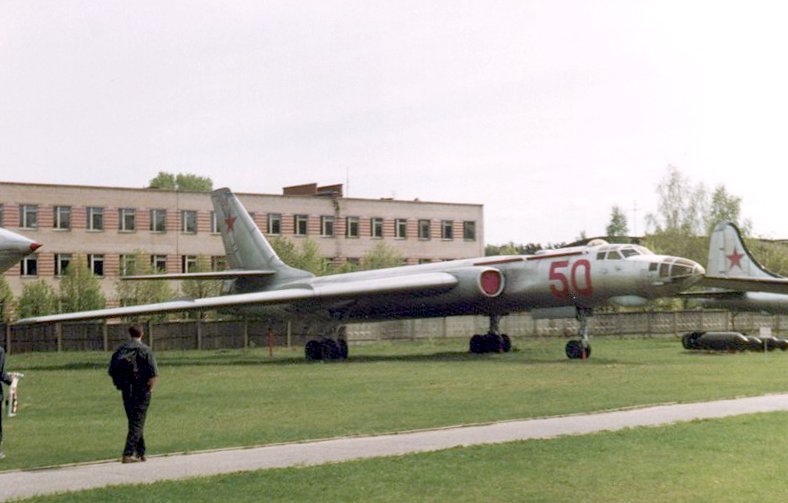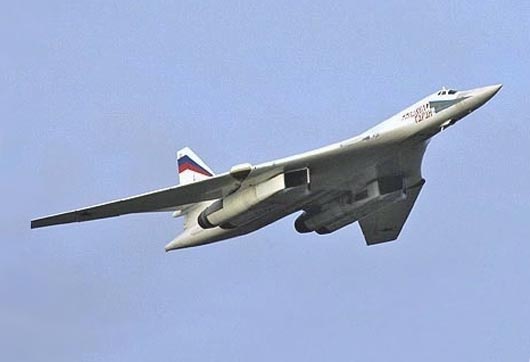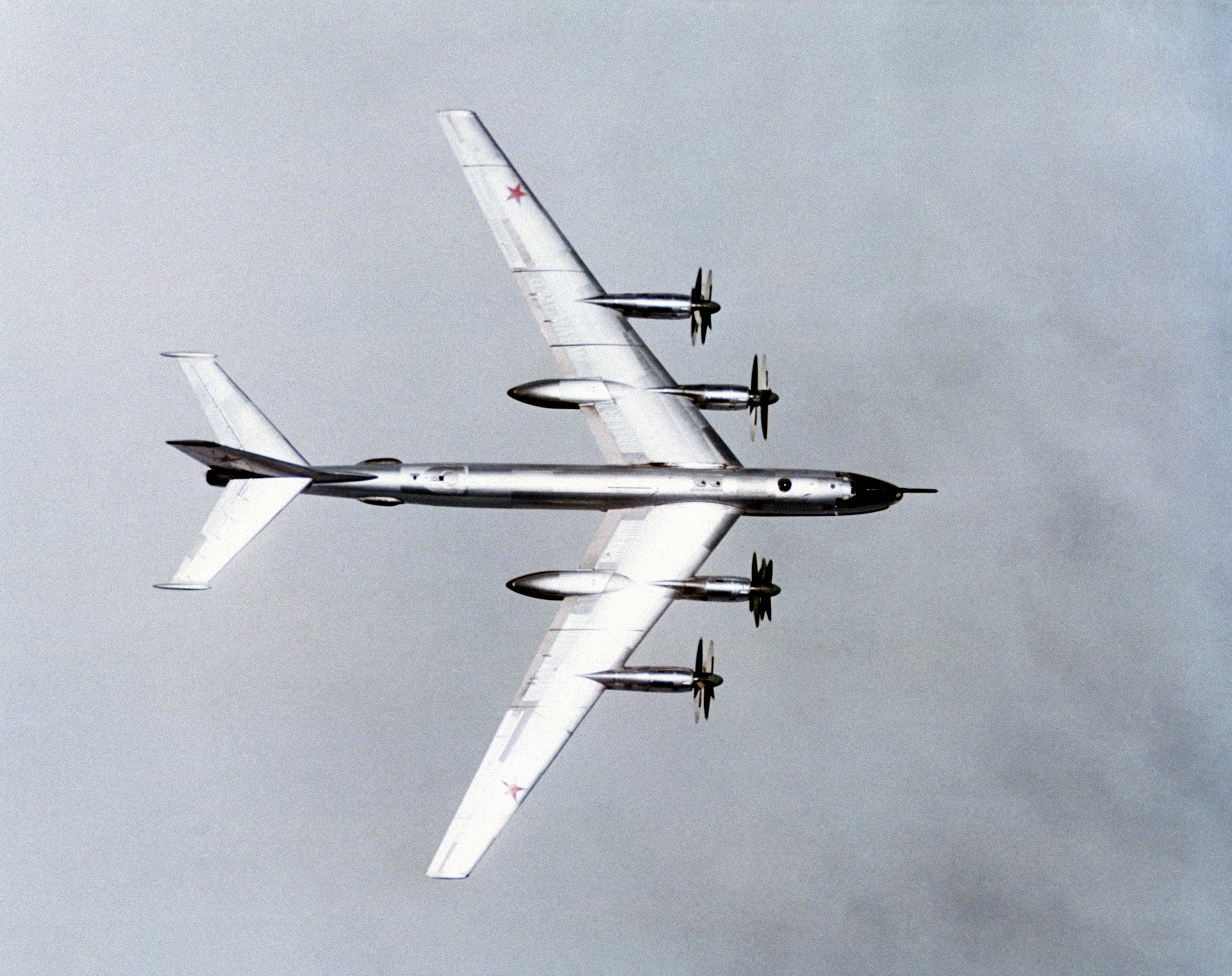|
Shaykovka
Shaykovka (russian: Шайковка; State airfields index: ЬУБЙ), also given variously as Kirov Shaykovka, Anisovo Gorod, Anisovo Gorodishche, Shaykovo, Shajkovka, Gorodische, Chaikovka, is an airbase of the Russian Air Force in Kaluga Oblast, Russia located 17 km north of Kirov, Kaluga Oblast. It is a large airfield with hangars and an extensive alert area for fighters. Appears the runway overrun was being built to extend the runway to 3000 m. In 2000, Tupolev Tu-160, Tupolev Tu-95MS, and Tupolev Tu-22M3 aircraft operated out of this base during a training exercise. The Natural Resources Defense Council listed the base as a nuclear site in a study. Units stationed here have included the 73rd gv. iap (''73-й гв. иап: гвардейский истребительный авиационный полк'' - 73rd Guards Interceptor Aviation Regiment) flying Mikoyan MiG-29 aircraft in the 1990s and 2000s; and the 52nd gv. tbap (''152-й гв. тбап: гвард ... [...More Info...] [...Related Items...] OR: [Wikipedia] [Google] [Baidu] |
Tupolev Tu-22M
The Tupolev Tu-22M (russian: Туполев Ту-22М; NATO reporting name: Backfire) is a supersonic, variable-sweep wing, long-range strategic and maritime strike bomber developed by the Tupolev, Tupolev Design Bureau in the 1960s. According to some sources, the bomber was believed to be designated Tu-26 at one time. During the Cold War, the Tu-22M was operated by the Soviet Air Forces (VVS) in a missile carrier strategic bombing role, and by the Soviet Naval Aviation (''Aviatsiya Voyenno-Morskogo Flota'', AVMF) in a long-range maritime anti-shipping role. As of 2021, before the 2022 Russian invasion of Ukraine, there were 66 of the aircraft in service. Development In 1962, after the introduction of the Tupolev Tu-22, it became increasingly clear that the aircraft was inadequate in its role as a bomber. In addition to widespread unserviceability and maintenance problems, the Tu-22's handling characteristics proved to be dangerous. Its landing speed was greater than previ ... [...More Info...] [...Related Items...] OR: [Wikipedia] [Google] [Baidu] |
Long-Range Aviation
Long-Range Aviation ( rus, Авиация Дальнего Действия, r=Aviatsiya dal'nego deystviya, abbr. to AДД, or ADD, and literally ''Aviation of Distant Action'') is a branch of the Russian Aerospace Forces responsible for delivering long-range nuclear or conventional strikes by aircraft rather than missiles. The branch was previously part of the Soviet Air Forces and Russian Air Force tasked with long-range bombardment of strategic targets with nuclear weapons. During the Cold War, it was the counterpart to the Strategic Air Command of the United States Air Force. Origins, 1936-1940 The first three Air Armies, designated Air Armies of Specific Purpose (or Particular Purpose) were created between 1936 and 1938. In accordance with the predominant Deep operations doctrine, the Red Army was reorganized into six echelons, of which the long-range aviation was the 1st echelon. The 2nd echelon consisted of: heavy tanks; the 3rd echelon: medium and light tanks; the 4 ... [...More Info...] [...Related Items...] OR: [Wikipedia] [Google] [Baidu] |
22nd Guards Heavy Bomber Aviation Division
The 22nd Guards Donbass Red Banner Heavy Bomber Aviation Division is a division of the Russian Aerospace Force's Long-Range Aviation branch having previously been a Soviet Air Forces formation. It was a Long Range Aviation division active from 1942 to 2008–9. Included in the 37th Air Army High Command. Commander of the division was Major General Alexander Blazhenko. It saw illustrious service during the Second World War, including supply of the Red Army in the Demyansk Pocket and the bombing of Berlin. History during the Second World War 62nd Aviation Division long-range The division was originally formed as the 62nd Aviation Division long-range order on the basis of a State Defence Committee Order of March 5, 1942, and Long-Range Aviation Commander Lieutenant General Aviation Golovanov on 6 March 1942. The division was formed at the air base Dyagilevo near the Ryazan-based 22nd Air Division.65 years from the date of the assignment 22nd Guards Heavy Bomber Aviation Donbas ... [...More Info...] [...Related Items...] OR: [Wikipedia] [Google] [Baidu] |
Kirov, Kaluga Oblast
Kirov (russian: Ки́ров) is a town and the administrative center of Kirovsky District in Kaluga Oblast, Russia, located on the Bolva River ( Desna's tributary) southwest of Kaluga, the administrative center of the oblast. Population: 29,000 (1970). History The settlement of Pesochnya () was founded in 1745. It was granted town status and renamed Kirov in honor of Sergey Kirov in 1936. Administrative and municipal status Within the framework of administrative divisions, Kirov serves as the administrative center of Kirovsky District, to which it is directly subordinated. As a municipal division, the town of Kirov is incorporated within Kirovsky Municipal District as Kirov Urban Settlement.Law #369-OZ Military The town is home to the Shaykovka (air base) Shaykovka (russian: Шайковка; State airfields index: ЬУБЙ), also given variously as Kirov Shaykovka, Anisovo Gorod, Anisovo Gorodishche, Shaykovo, Shajkovka, Gorodische, Chaikovka, is an airbase of the R ... [...More Info...] [...Related Items...] OR: [Wikipedia] [Google] [Baidu] |
Natural Resources Defense Council
The Natural Resources Defense Council (NRDC) is a United States-based 501(c)(3) non-profit international environmental advocacy group, with its headquarters in New York City and offices in Washington D.C., San Francisco, Los Angeles, Chicago, Bozeman, and Beijing. Founded in 1970, as of 2019, the NRDC had over three million members, with online activities nationwide, and a staff of about 700 lawyers, scientists and other policy experts. History The NRDC was founded in 1970.Robert Gottlieb, ''Forcing the Spring: The Transformation of the American Environmental Movement'' (revised ed.: Island Press, 2005), pp. 193–94. Its establishment was partially an outgrowth of the ''Scenic Hudson Preservation Conference v. Federal Power Commission'', the Storm King case. The case centered on Con Ed's plan to build the world's largest hydroelectric facility at Storm King Mountain. The proposed facility would have pumped vast amounts of water from the Hudson River to a reservoir and released ... [...More Info...] [...Related Items...] OR: [Wikipedia] [Google] [Baidu] |
Soviet Long Range Aviation
The Soviet Union,. officially the Union of Soviet Socialist Republics. (USSR),. was a transcontinental country that spanned much of Eurasia from 1922 to 1991. A flagship communist state, it was nominally a federal union of fifteen national republics; in practice, both its government and its economy were highly centralized until its final years. It was a one-party state governed by the Communist Party of the Soviet Union, with the city of Moscow serving as its capital as well as that of its largest and most populous republic: the Russian SFSR. Other major cities included Leningrad (Russian SFSR), Kiev (Ukrainian SSR), Minsk (Byelorussian SSR), Tashkent (Uzbek SSR), Alma-Ata (Kazakh SSR), and Novosibirsk (Russian SFSR). It was the largest country in the world, covering over and spanning eleven time zones. The country's roots lay in the October Revolution of 1917, when the Bolsheviks, under the leadership of Vladimir Lenin, overthrew the Russian Provisional Government that ... [...More Info...] [...Related Items...] OR: [Wikipedia] [Google] [Baidu] |
Soviet Air Force Bases
The Soviet Union,. officially the Union of Soviet Socialist Republics. (USSR),. was a transcontinental country that spanned much of Eurasia from 1922 to 1991. A flagship communist state, it was nominally a federal union of fifteen national republics; in practice, both its government and its economy were highly centralized until its final years. It was a one-party state governed by the Communist Party of the Soviet Union, with the city of Moscow serving as its capital as well as that of its largest and most populous republic: the Russian SFSR. Other major cities included Leningrad (Russian SFSR), Kiev (Ukrainian SSR), Minsk ( Byelorussian SSR), Tashkent (Uzbek SSR), Alma-Ata (Kazakh SSR), and Novosibirsk (Russian SFSR). It was the largest country in the world, covering over and spanning eleven time zones. The country's roots lay in the October Revolution of 1917, when the Bolsheviks, under the leadership of Vladimir Lenin, overthrew the Russian Provisional Government th ... [...More Info...] [...Related Items...] OR: [Wikipedia] [Google] [Baidu] |
Loitering Munition
A loitering munition (also known as a suicide droneLoitering Munitions – In Focus Center for the Study of the Drone, Feb 2017 or drone) is an aerial weapon system category in which the loiters (waits passively) around the target area for some time and attacks only once a target is located. [...More Info...] [...Related Items...] OR: [Wikipedia] [Google] [Baidu] |
Tupolev Tu-16
The Tupolev Tu-16 ( NATO reporting name: Badger) is a twin-engined jet strategic heavy bomber used by the Soviet Union. It has been flown for almost 70 years, and the Chinese license-built Xian H-6 remains in service with the People's Liberation Army Air Force. Development In the late 1940s, the Soviet Union was strongly committed to matching the United States in strategic bombing capability. The Soviets' only long-range bomber at the time was Tupolev's Tu-4 'Bull', a reverse-engineered copy of the American B-29 Superfortress. The development of the notably powerful Mikulin AM-3 turbojet led to the possibility of a large, jet-powered bomber. The Tupolev design bureau began work on the Tu-88 ("Aircraft N") prototypes in 1950. The Tu-88 first flew on 27 April 1952. After winning a competition against the Ilyushin Il-46, it was approved for production in December 1952. The first production bombers entered service with Frontal Aviation in 1954, receiving the service designation ... [...More Info...] [...Related Items...] OR: [Wikipedia] [Google] [Baidu] |
Mikoyan MiG-29
The Mikoyan MiG-29 (russian: Микоян МиГ-29; NATO reporting name: Fulcrum) is a twin-engine fighter aircraft designed in the Soviet Union. Developed by the Mikoyan design bureau as an air superiority fighter during the 1970s, the MiG-29, along with the larger Sukhoi Su-27, was developed to counter new U.S. fighters such as the McDonnell Douglas F-15 Eagle and the General Dynamics F-16 Fighting Falcon.Gordon and Davison 2005, p. 9. The MiG-29 entered service with the Soviet Air Forces in 1983. While originally oriented towards combat against any enemy aircraft, many MiG-29s have been furnished as multirole fighters capable of performing a number of different operations, and are commonly outfitted to use a range of air-to-surface armaments and precision munitions. The MiG-29 has been manufactured in several major variants, including the multirole Mikoyan MiG-29M and the navalised Mikoyan MiG-29K; the most advanced member of the family to date is the Mikoyan MiG-35. Later ... [...More Info...] [...Related Items...] OR: [Wikipedia] [Google] [Baidu] |
Tupolev Tu-160
The Tupolev Tu-160 (russian: Туполев Ту-160 Белый лебедь, translit=Belyj Lebeď, translation= White Swan; NATO reporting name: Blackjack) is a supersonic, variable-sweep wing heavy strategic bomber designed by the Tupolev Design Bureau in the Soviet Union in the 1970s. It is the largest and heaviest Mach 2+ supersonic military aircraft ever built and second to the experimental XB-70 Valkyrie in overall length. As of 2022, it is the largest and heaviest combat aircraft, the fastest bomber in use and the largest and heaviest variable-sweep wing airplane ever flown. Entering service in 1987, the Tu-160 was the last strategic bomber designed for the Soviet Union. As of 2016, the Russian Air Force's Long Range Aviation branch had 16 aircraft in service. The Tu-160 active fleet has been undergoing upgrades to electronics systems since the early 2000s. The Tu-160M modernization program of existing models has begun with the first updated aircraft delivered in Decemb ... [...More Info...] [...Related Items...] OR: [Wikipedia] [Google] [Baidu] |
Tupolev Tu-95
The Tupolev Tu-95 (russian: Туполев Ту-95; NATO reporting name: "Bear") is a large, four-engine turboprop-powered strategic bomber and missile platform. First flown in 1952, the Tu-95 entered service with the Long-Range Aviation of the Soviet Air Forces in 1956 and was first used in combat in 2015. It is expected to serve the Russian Aerospace Forces until at least 2040. A development of the bomber for maritime patrol is designated the Tu-142, while a passenger airliner derivative was called the Tu-114. The aircraft has four Kuznetsov NK-12 engines with contra-rotating propellers. It is the only propeller-powered strategic bomber still in operational use today. The Tu-95 is one of the loudest military aircraft, particularly because the tips of the propeller blades move faster than the speed of sound. Its distinctive swept-back wings are set at an angle of 35°. The Tu-95 is the only propeller-driven aircraft with swept wings that has been built in large numbers. De ... [...More Info...] [...Related Items...] OR: [Wikipedia] [Google] [Baidu] |
